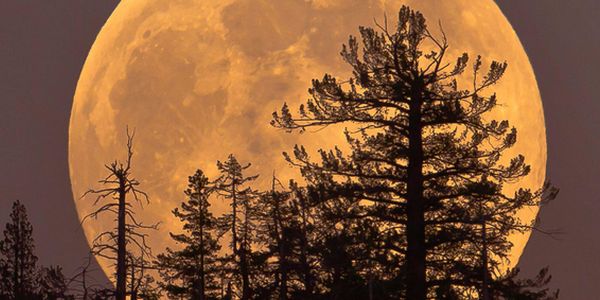Saturday night will give lunar enthusiasts a special treat: a supermoon.
While the moon stays the same size, its relative position to Earth can change. This particularly large and bright full moon can appear 12% to 14% larger and shine brighter because it is slightly closer than normal.
The moon will be at its perigee (closest approach to Earth) on Saturday night. The lunar body reaches a perigee every time it completes its elliptical orbit around the earth – about every 27 days – but a supermoon only happens when two events line up: the perigee, and a full moon. This happens between
three and four times a year.
According to
Space.com, the moon will be fullest at exactly 2:35 p.m. ET on Saturday, Aug. 29 and reach perigee the next day, about 20 hours later, at 11 a.m. ET on Sunday, Aug. 30.
Unlike solar eclipses and other celestial treats, Supermoons occur every 13 months and 18 days.
The brilliance of a supermoon is determined by how closely the perigee and the fullest point coincide. Additionally, the perigee is not a concrete number and changes every lunar orbit. The distance moon is to Earth at its perigee for one orbit can be somewhat smaller or larger than during another orbit.
Saturday’s supermoon is the first of three such consecutive events. Called the Sturgeon Moon, it is the last full moon of summer.
The Harvest Moon on Sept. 27 will be the most dramatic event. September’s lunar perigee is special because it’s the closest perigee of the entire year, termed the “proxigee.” It will also coincide with a lunar eclipse to bring what is called a Blood Moon.
One more supermoon follows on Oct. 27, but it will be slightly more distant than the previous two.



















it won't be so crumchy

